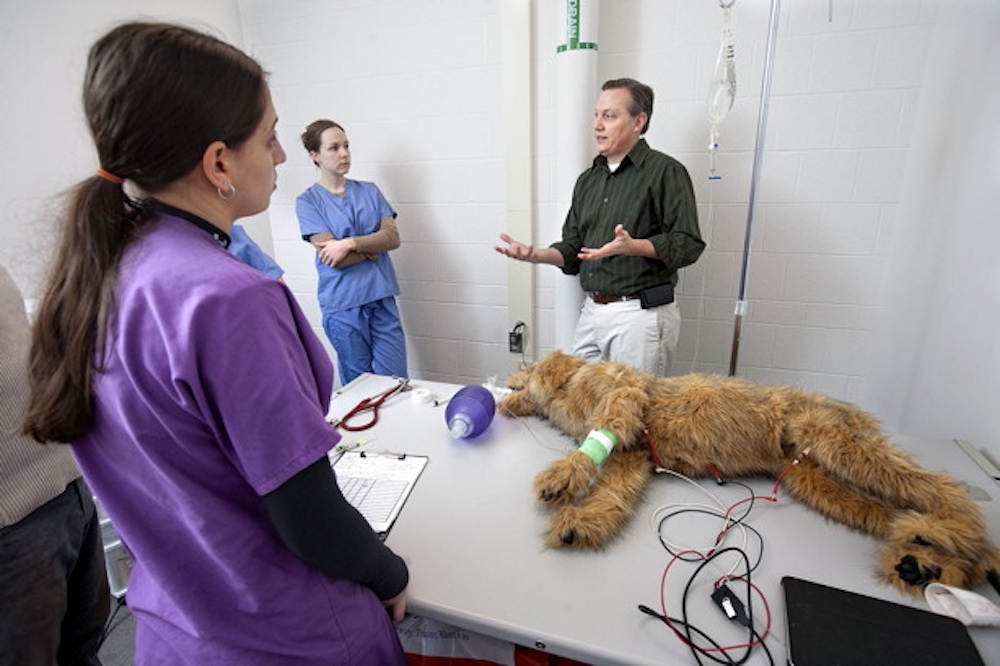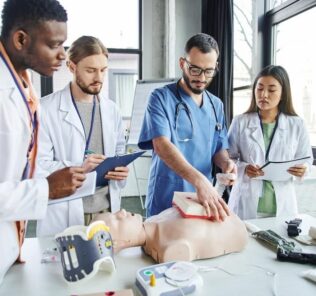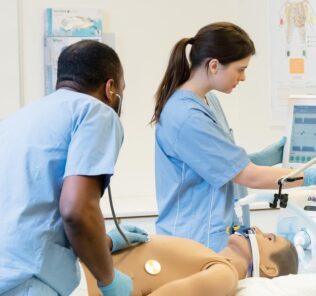Innovative Expansion of Simulation into Veterinary Medicine
Medical simulation is used to enhance learning experiences and skill set retention across a number of health care disciplines, including veterinary medicine. Today, Daniel J. Fletcher, Ph.D., DVM, DACVECC, Associate Professor of Emergency and Critical Care at the Cornell University College of Veterinary Medicine, uses telesimulation as an extension he and his team developed into their simulation platform. Demonstrating the impact such technology can have on veterinary science, Fletcher co-authored the article, “Development and Evaluation of a High-Fidelity Canine Patient Simulator for Veterinary Clinical Training” in 2012.
“I got started in this area in 2009 after learning about immersive simulation at the Society of Critical Care Medicine conference. I started the work by purchasing a Laerdal ALS Simulator Advanced simulator, tearing it apart, and putting the pieces into a static canine CPR manikin,” explained Fletcher, who also has a background in engineering. “We are very resource-constrained in veterinary education and this was an expensive way to approach this.”
From here, Fletcher was able to obtain grant funding to develop his program’s own open-source hardware/software platform, called Open VetSim. These simulators have pulses, a heart and lung sound auscultation system, spontaneous chest rise, detection of chest compressions and ventilation. This allows educators to drive a simulated patient monitor and pre-program scenarios.
Sponsored Content:
“We basically took a commercial canine manikin, cut it apart, 3D printed a chest plate for it to house seekers and moved everything over into the canine manikin,” Fletcher said. “Then about four or five years ago, we started working on a project to develop our own platform because, although the ALS simulator advanced by human medical simulators standards is pretty cheap, it’s very expensive for veterinary education. We wanted to take what we had learned from the Laerdal system and try to build our own.”
In achieving this goal, the systems Fletcher and his team currently use are based on their open source software and hardware platform for veterinary stimulation, called Open Bed SIM.
They also now employ what’s called a BeagleBone black microcontroller, an open source $50 microcontroller that provides the hardware interface. The commercial soundboard then generates the heart and lung sounds and pulses using a haptic unit. Further, a couple of custom interface boards designed interconnect everything. Then, that connects via network connection to the server computer that runs the software that sort of drives the whole thing.
“We’ve got a couple of different styles of K9 manikins and we’re working on a feline mannequin now that allows us to do sort of the same basic functions that the Laerdal simulator allowed us to do,” Fletcher shared. “But now we can build more of them and it’s much less expensive to do it that way.”
Sponsored Content:
Fletcher believes that as more vet schools are developing clinical simulation labs, this kind of immersive simulation experience with a patient simulator will expand. He noted that while many facilities have a lot of task trainers, they lack the full on patient simulators. Fletcher says this is mostly because of the cost and because they are not a commercial option available.
“I think a really relevant aspect of using [these simulators] for veterinary education is this ability to have real time scenarios where students have to make decisions in a certain period of time,” Fletcher said. “It’s a great way to teach [learners] that sometimes not making a decision is the worst decision you can make. You have to take your best guess based on what you’ve got in front of you.”
Before switching to this new system, and as discussed in the 2012 the article,co-authored by Roberta Militello, BFA, M Arch, Gretchen L. Schoeffler, DVM, DACVECC; and Catherine L. Rogers, DVM, DACVEC, 96 veterinary learners participated in cardiopulmonary arrest scenarios using a high-fidelity canine patient simulator (CPS), developed using components from a Laerdal human patient simulator. In groups of three to five learners, they completed each scenario and were subsequently asked to complete an anonymous online survey describing their experiences. Of all the participants, 70 completed the survey, and the results concluded that:
- 100% felt that the simulator session expanded their cardiopulmonary resuscitation (CPR) knowledge base.
- 97% responded that their skills and abilities had improved.
- 89% agreed or strongly agreed that the CPS was realistic.
- 73% agreed or strongly agreed that the scenarios generated emotions similar to real clinical situations.
- 98.5% agreed or strongly agreed that the simulator was an engaging learning experience.
Furthermore, a common theme among participants was that the simulations allowed them to practice communication and teamwork skills. The simulator was viewed as more effective than paper-based, problem-oriented learning opportunities and lectures. Additionally, learners commented that they wanted more opportunities to participate in similar simulation exercises.
From these results, the authors shared their beliefs that high-fidelity veterinary simulation is truly an engaging educational methodology that addresses some limitations of other forms of problem-based learning. Yet, they noted that more studies are needed to quantitatively determine the effectiveness of this novel veterinary educational technology in comparison with more traditional approaches.
More About the Cornell University Canine Patient Simulator
In January 2013, Cornell University announced that the Center for Advanced Computing (CAC) was assisting the College of Veterinary Medicine in the development of robotic pets (robo-pets) for Cornell’s new veterinary simulation center. This center was the first to incorporate robotic high-fidelity canine and feline simulators.
According to Cornell University, early models used human simulation software that did not provide the best approximation of a crashing dog or cat. Unfortunately, the commercial software used for human simulations was not adaptable to simulate the fast heartbeat and respiration of smaller animals, not to mention their unique reactions to resuscitation. As an alternative learning tool, the software, code-named “Ursula” (Universal Realistic Simulation of a Living Animal), was created to simulate physiological responses for a variety of species, and supported inexpensive, off-the-shelf hardware components.
“The platform includes a low-cost microcontroller that can be interfaced to a variety of sensors and actuators, a graphical software application for students and instructors to view and interact with the simulation, and a communication protocol to tie everything together,” said CAC consultant Aaron Birkland.
Learn More About Cornell’s Canine Patient Simulator
Lance Baily, BA, EMT-B, is the Founder & CEO of HealthySimulation.com, which he started while serving as the Director of the Nevada System of Higher Education’s Clinical Simulation Center of Las Vegas back in 2010. Lance is also the Founder and acting Advisor to the Board of SimGHOSTS.org, the world’s only non-profit organization dedicated to supporting professionals operating healthcare simulation technologies. His co-edited Book: “Comprehensive Healthcare Simulation: Operations, Technology, and Innovative Practice” is cited as a key source for professional certification in the industry. Lance’s background also includes serving as a Simulation Technology Specialist for the LA Community College District, EMS fire fighting, Hollywood movie production, rescue diving, and global travel. He and his wife Abigail Baily, PhD live in Las Vegas, Nevada with their two amazing daughters.
Sponsored Content:




















